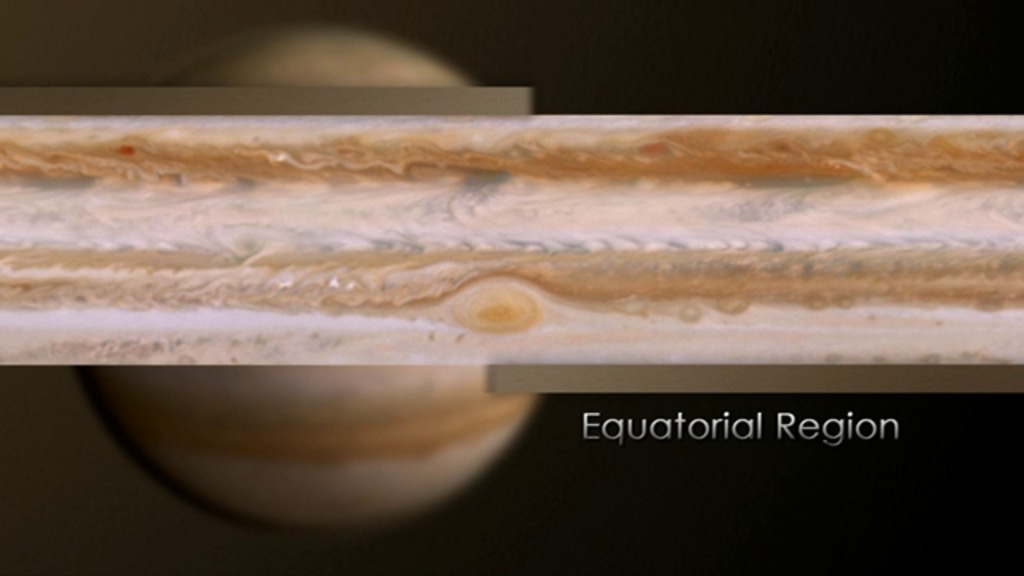Jupiter's Jet Streams
Jupiter is the largest and most massive planet in our solar system. You might not think of it as a place to learn about Earth's atmosphere and weather, but Jupiter, like our home planet, has cyclones (the Jovian equivalent of hurricanes) and anticyclones, along with fast-moving jet streams that circle its globe. Revealed in a sequence of black-and-white images taken by the Cassini spacecraft during its flyby of Jupiter are chevrons, dark V-shaped features that travel within a band of powerful winds near the equator. By tracking chevrons, NASA scientists were not only able to gauge the jet stream's speed, but also witness its subtle, wavelike movement as it zoomed around the planet—something never before seen. Studying this motion can help scientists better understand similar weather patterns on Earth. Learn more about this discovery and see footage of Jupiter's jet streams by watching the videos below.

For the first time, a jet stream on Jupiter is seen catching an atmospheric wave.
The wavelike movement spotted in one of Jupiter's jet streams can be seen in this footage taken by Cassini.
Studying Jupiter's atmosphere helps us understand what's unique, and what's not, about Earth's weather.

Jupiter's jet streams tend to zoom around the globe in lines so neat and straight that the planet appears striped.

This jet stream on Jupiter is 100 to 1,000 times wider than any jet stream on Earth and would cover one-quarter of our planet.

Tracking chevrons in the jet stream revealed winds traveling at speeds of 325 mph.
For More Information
See NASA.gov
Credits
Please give credit for this item to:
NASA's Goddard Space Flight Center
Striped appearance image courtesy of NASA/STScI
Jet stream close-up image courtesy of NASA/JPL/Space Science Institute Credit
Chevron close-up image courtesy of NASA/JPL/Space Science Institute
-
Animators
- Tom Bridgman (Global Science and Technology, Inc.)
- Greg Shirah (NASA/GSFC)
- Ernie Wright (USRA)
- Trent L. Schindler (USRA)
- Lori Perkins (NASA/GSFC)
- David Choi (Oak Ridge Associated Universities (ORAU))
-
Video editor
- Dan Gallagher (USRA)
-
Interviewees
- Amy A. Simon (NASA/GSFC)
- David Choi (Oak Ridge Associated Universities (ORAU))
-
Producer
- Dan Gallagher (USRA)
-
Scientists
- Amy A. Simon (NASA/GSFC)
- David Choi (Oak Ridge Associated Universities (ORAU))
-
Videographer
- Rob Andreoli (Advocates in Manpower Management, Inc.)
-
Writer
- Elizabeth Zubritsky (ADNET Systems, Inc.)
Release date
This page was originally published on Tuesday, June 5, 2012.
This page was last updated on Wednesday, May 3, 2023 at 1:53 PM EDT.
